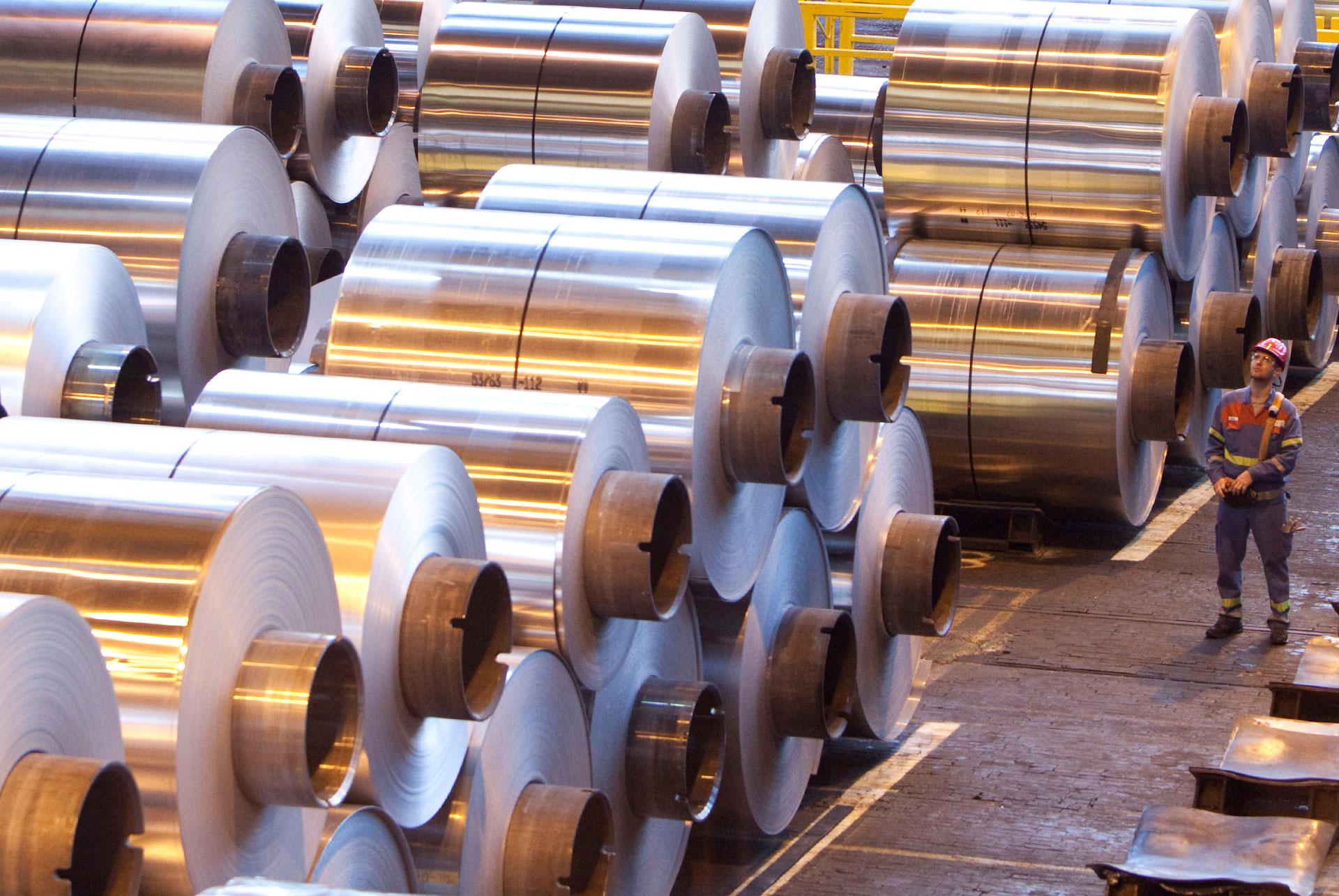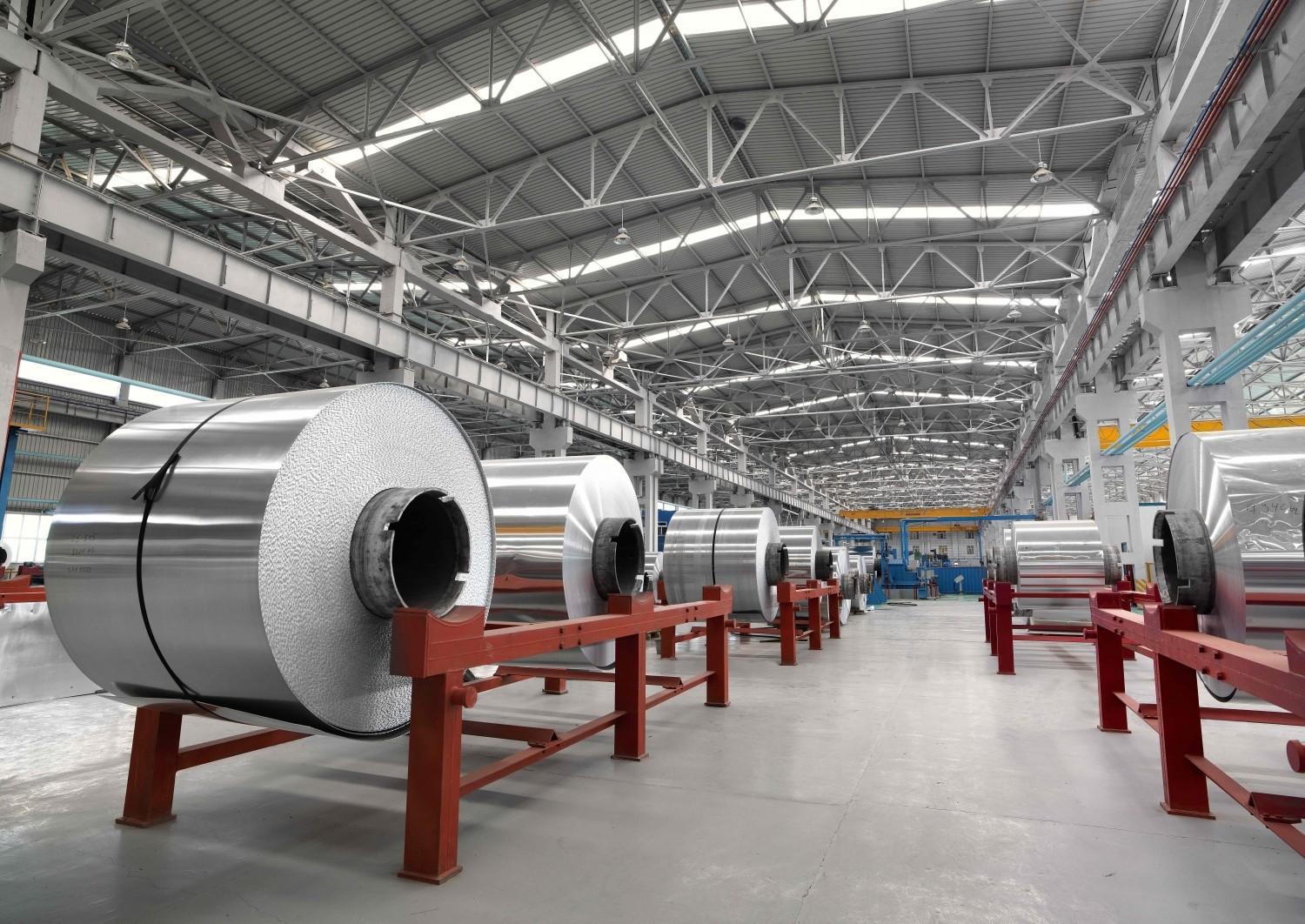Azerbaijan: The new powerhouse of aluminium production amid global market strain "Green" era's requirement
The American business magazine, Forbes, has noted a rise in global aluminium prices of more than 25% in the first half of this year. Although there was a slight dip in July, medium-term demand for aluminium is expected to rise due to decreased supply caused by anti-Russian sanctions, a significant increase in tariffs on metal imports from China, and delivery disruptions from Australian alumina producers. In the long term, the global shift towards "green" energy will continue to boost demand for aluminium. This situation benefits Azerbaijan, which is expanding its aluminium production and has initiated a programme to modernize its facilities in Ganja and Sumgayit.
Construction and aviation, automotive and shipbuilding, power engineering, electrical engineering and electronics, food and pharmaceutical industries - this is by no means a complete list of industries that cannot be imagined without the use of rolled aluminium. Alas, the price swings in the aluminium market that have continued since the pandemic period have severely shaped the industry over the past four years. The global energy crisis triggered by the outbreak of war in Ukraine has severely damaged the highly energy-intensive non-ferrous metals segment in Europe and the US, with smelters closing, production cuts and rising prices for aluminium raw materials.
The global energy crisis caused by the outbreak of war in Ukraine has severely damaged the highly energy-intensive non-ferrous metals segment in Europe and the United States, with plant closures, production cuts and rising prices for aluminium raw materials. Price peaks in February 2022 brought the cost of a tonne of aluminium to an unprecedented $3900, followed by a sharp decline. In the first third of 2023, prices for this metal fluctuated for a long time in the range of $2,150-2,350 per tonne, followed by a period of correction against the backdrop of last year's global recession.
According to Forbes, aluminium prices rose by more than a quarter in the first half of 2024: in June, according to the London Metal Exchange (LME), the cost of three-month futures for delivery of the metal rose to $2,767.5 per tonne, the highest level since the beginning of the year before last. Analysts surveyed by Forbes link the rise in aluminium prices to investors' concerns about the availability of Russian raw materials (it accounts for 5% of global supplies): we recall that in December 2023, the European Union banned the supply of aluminium wire, foil, pipes and other accessories from Russia.
As per research by China's Shanghai Dongwu Jiuying Investment Management Co., the rise in prices is due to "fears that sanctions will reduce the supply of Russian aluminium to Western markets", and these are justified fears, because until recently Russian primary aluminium accounted for about 91% of the LME's storage system. The US administration's threats to increase tariffs on imports of steel and aluminium from China threefold contributed to the agitation on the aluminium market: note that the current import rate for certain categories of metal is 7.5%. Aluminium also rose in price due to force majeure on alumina supplies from the plants in Australia of Rio Tinto, the world's largest producer.

In turn, among the objective factors that have a long-term impact on the market, it should be noted that aluminium is the second most in-demand metal after copper, given the global transition to "green" energy. And despite the fact that since mid-July, prices on the Shanghai Futures Exchange have slightly decreased, correcting down to $2,410 per tonne on the LME, the global demand for aluminium is forecast to remain stable in the medium term, based on a combination of factors.
This is also evidenced by Bloomberg data, according to which the world's largest traders and banks recently clashed on the aluminium market, resulting in more than $1 billion worth of metal changing hands and long queues at LME warehouses. For example, commodities giant Trafigura Group delivered huge volumes of aluminium to the LME in May, while stating its pessimistic forecasts. On the other hand, banks and hedge funds, including Squarepoint Capital LLP, Citigroup Inc. and JPMorgan Chase & Co. responded by buying up Trafigura's metal and ordering it back from the warehouse system, leading to a significant shift in the distribution of global aluminium stocks at a time when future shortages are forecast.
Obviously, various stock exchange speculations, anti-Russian sanctions and the rise in US customs tariffs are fraught with increased price volatility in the aluminium market. But on the whole, all of the above unwittingly restrains the "bearish" trends on the market of the "silver" metal.
The favourable external environment, as well as the presence of significant gas reserves in Azerbaijan and the rapid development of the renewable energy sources (RES) segment contribute to the generation of relatively inexpensive electricity, which is beneficial for our country, where aluminium production has recently increased and the aluminium industrial complex is being modernised.
Thus, if in 2022 Azerbaijan exported over 68,263 tonnes of aluminium and aluminium products, then in 2023 the supplies exceeded 74,502 tonnes, increasing in volume by 9.14%. Production is also growing in line with exports: according to the State Statistics Committee, in January-June 2024, the production of aluminium products increased by 64.9% compared to the same period last year, but exports, which reached 37,742 tonnes, are slightly behind the figures for the first half of last year.
It is worth noting that last year and this year the domestic market of the country has noticeably increased the demand for rolled aluminium: for example, within the framework of the next stages of the I State Programme "Great Return to the liberated territories of Azerbaijan", an unprecedented scale of residential construction is being carried out in the country, during which a huge amount of aluminium profile is used for glazing works, etc. Overall, the demand in the domestic market is considerable, as is also evidenced by the fact that Kazakhstan exported 43,100 tonnes of aluminium to Azerbaijan in January-April 2024, an eightfold increase in shipments.

On the other hand, Azerbaijan is consistently expanding international cooperation to optimise the industry production chain. In particular, a Memorandum of Understanding was signed between the Tajik aluminium smelter TALCO OJSC and Azerbaijan's Azeraluminium LLC at a business forum in Dushanbe in May this year: under the agreement, Azerbaijan will assist in attracting finance for the reconstruction of the TALCO enterprise, and it is also planned to export Azerbaijani alumina to Tajikistan, and to supply aluminium and very important raw materials - cryolite and aluminium fluoride - in the reverse direction. Azerbaijan Investment Company OJSC (AIC) plans to participate in financing this endeavour. It should be reminded that the design capacity of TALCO is 517,000 tonnes of aluminium per year, and in the past domestic aluminium producers have cooperated with this enterprise quite closely.
Well, the biggest breakthrough in modernisation of the domestic aluminium complex should be expected after the implementation of a multi-stage project - rehabilitation and modernisation works at the Ganja alumina refinery, where after the introduction of new technologies to ensure the granularity of alumina the production volumes are planned to reach the design capacity of about 400 thousand tonnes of alumina per year. These and other works are planned as part of the implementation of the Azerbaijani-German joint venture for the production of rolled aluminium.
In July 2022, Azerbaijan Industrial Corporation OJSC (ASK), under the management of which Azeraluminium LLC enterprises are located, and German company Achenbach Alpha GmbH signed a contract on the establishment of a joint venture. According to the announced plans, within two stages of the project it is planned to increase production to 105,000 tonnes of aluminium per year, the total investment cost of the project is estimated at $451.2 million, with $132 million to be invested in the first stage. It should be noted that in November of the same year the State Tax Service (STS) under the Ministry of Economy registered a new joint venture - İnteral LLC, and according to information, the new structure will organise production of competitive aluminium products in Ganja and plans to export them to the US and European markets.








